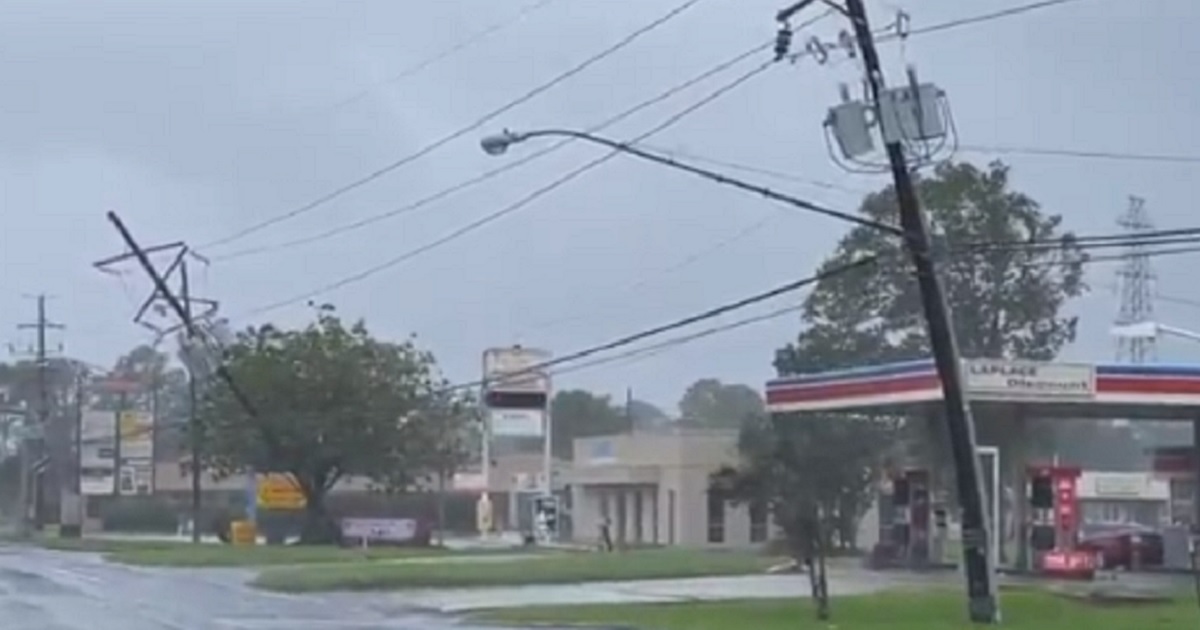Long before Hurricane Ida struck Louisiana Sunday, its impacts were already being felt.
Ida struck the coast near Port Fourchon, Louisiana, shortly before 1 p.m. ET, on the 16th anniversary of the devastating arrival of Hurricane Katrina, according to CNN. Ida arrived as a Category 4 hurricane with winds of up to 150 mph, according to the National Hurricane Center.
Katrina made landfall as a Category 3 hurricane with sustained winds up to 125 mph, at Buras-Triumph, Louisiana, according to the National Hurricane Center. Buras-Triumph is about the same distance from New Orleans as Port Fourchon.
More than 90 percent of the Gulf of Mexico’s oil production was shut down Saturday and 85 percent of its natural gas operations, according to HoumaToday, the website of the local paper the Houma (La.) Chronicle.
1155 AM CDT: #Ida made landfall as an extremely dangerous category 4 hurricane near Port Fourchon, Louisiana, with maximum sustained winds of 150 mph and a minimum central pressure of 930 mb (27.46 inches) https://t.co/tW4KeFW0gB pic.twitter.com/iHdKMGk0tq
— National Hurricane Center (@NHC_Atlantic) August 29, 2021
About 17 percent of America’s gasoline supplies and 5 percent of its natural gas comes from the gulf region, according to the U.S. Energy Information Administration.
“Many plants have been hardened against hurricanes, but disruptions in operations are still very likely due to flooding, power outages and personnel dislocations,” the energy analysis firm Platts Analytics said, according to the Houston Chronicle.
Power lines starting to come down in Laplace, LA. Pressure now sub 1000 MB. #Ida #HurricaneIda pic.twitter.com/m3KEscF56g
— Mike Remaley (@mikeremaley1) August 29, 2021
Katrina’s arrival caused a massive, long-term spike in gasoline prices. The same scenario could play out with Ida in the days ahead, said Phil Flynn, senior market analyst at The Price Futures Group.
The storm will “slow down petroleum and natural gas exports and imports,” said Flynn, according to MarketWatch.
What that means for the market remains to be seen.
“How demand expectations change in the wake of the storm will depend on the damage sustained,” said Tyler Richey, co-editor at Sevens Report Research, according to MarketWatch.
“If refineries bounce right back and begin normal operations after landfall, there will be a limited impact on demand and therefore prices,” he said.
“But if we see delays in restarting operations, then expect oil prices to underperform and refined products to outperform given expectations of reduced demand for the former and supply draws in the latter.”
NEW: Gas prices in the Southeastern and Mid-Atlantic markets will likely rise by around 10 cents a gallon if refineries in the New Orleans area take a direct hit from Hurricane Ida, the president of Lipow Oil Associates says. https://t.co/7klN3LMO5C
— NBC News (@NBCNews) August 29, 2021
Regionally, gasoline demand in Louisiana was up 71 percent last week, according to Patrick DeHaan, head of petroleum analysis at tracking firm GasBuddy, according to HoumaToday.
Some of that demand was from residents evacuating, according to NOLA.com, the online edition of The Advocate, based in Baton Rouge.
Video footage from Grand Isle as Hurricane Ida makes landfall pic.twitter.com/dLijXbGLc4
— wdsu (@wdsu) August 29, 2021
Artist Kai Barrow, 62, was going to Houston.
“I’m mostly concerned about the power outages. Like, what’s the point?” she said. “It doesn’t make sense to me to sit in heat and darkness.”
Not everyone was leaving. Aurora Knox, a tailor, said that when she left her house before Katrina, she could not return for 29 days. Not this time.
“I don’t know what’s coming, but this house has been here more than 100 years, and it’s still here. We have food, we have water. So we decided to ride it out,” she told NOLA.com.
“I’m gonna’ cook a pot of beans. The highway’s just not my best friend,” she said.
This article appeared originally on The Western Journal.

























 Continue with Google
Continue with Google